I am the 5-th-year Ph.D. student in the college of Computer Science and Technology at
Zhejiang University, fortunately advised by Prof. Yang Yang.
I graduated from the Chu Kochen Honors College, Zhejiang University (浙江大学竺可桢学院)
with dual bachelor’s degrees in Statistics and Computer Science and Technology.
My research interests include machine learning for healthcare, large-scale time series analysis, human-centered AI and
any interesting topics and cutting-edge technology.
I have published several papers 
🔥 News
- 2024.09: 🎉🎉 Con4m and DMNet are accepted by NeurIPS’24 (~25% acceptance rate).
- 2024.05: 🎉🎉 Brant-X is accepted by KDD’24 (~20% acceptance rate).
- 2023.09: 🎉🎉 Brant and PPi are accepted by NeurIPS’23 (26.1% acceptance rate).
📝 Publications
Exploring foundation model for brain signals
Since 2020, I have served as the team leader for the BrainNet group, working alongside Prof. Yang to initiate and develop the group’s research direction and roadmap from scratch. In my role as team leader, I have been deeply involved in shaping the ideas for each paper among the group members. Simultaneously, I have provided assistance and guidance to the best of my ability in coding and writing. Below is the roadmap of our group’s research.

We aim to establish a universal model for brain signals, enhancing performance in various downstream tasks within the healthcare domain while empowering a quantitative understanding of brain activity in neuroscience for human.
Starting from a real medical scenario—seizure detection, our goal is to automatically identify epileptic waves in intracranial brain signals for medication-resistant patients, expediting the localization of lesions within the brain. Inspired by neuroscience research, we initially attempt to model the diffusion patterns of epileptic waves for individual patients (BrainNet, KDD’22). Subsequently, we employ self-supervised learning to capture universal spatio-temporal correlations between signals from different brain regions, facilitating generalization to different patients (MBrain, KDD’23; PPi, NeurIPS’23; DMNet, NeurIPS’24).
To construct a foundational model, we first attempt to pretrain a foundational model with 500M parameters based on a large volume of intracranial brain signals (Brant, NeurIPS’23). Subsequently, we integrate EEG into the pretraining corpus, building a foundational model with 1B parameters, thereby generalizing to a broader range of downstream tasks such as sleep staging and emotion recognition (Brant-2, arXiv). Leveraging the strong generalization of Brant-2, we propose a unified alignment framework (Brant-X, KDD’24) to rapidly adapt Brant-2 to downstream tasks involving rare physiological signals (e.g., EOG/ECG/EMG). In our pursuit to construct a universal foundational model, we recognize the necessity for a comprehensive dataset encompassing a wide array of domains. Given the scarcity of brain signal data, we explore a diffusion-based model for intracranial brain signals generation (NeuralDiff, under review). Furthermore, we innovate to directly synthesize infinite sequences, thereby circumventing the dependence on actual data (InfoBoost, arXiv).
To enhance mutual understanding and trust between humans and machines, we first propose a consistency learning framework that enables models to understand human input and adaptively harmonize annotations from different individuals (Con4m, NeurIPS’24). Additionally, we are developing connections between foundational models and human-understandable modalities, and exploring interactive learning between models and humans.
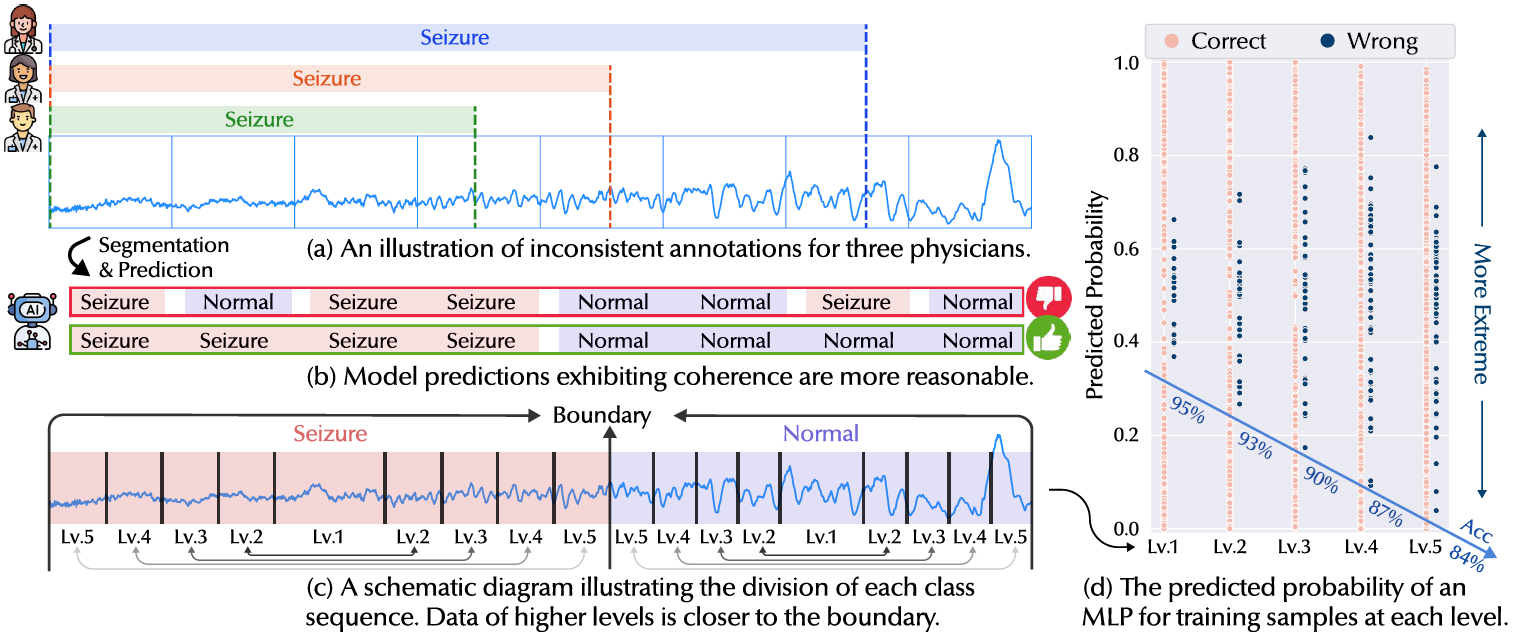
Con4m: Context-aware Consistency Learning Framework for Segmented Time Series Classification
Junru Chen, Tianyu Cao, Jing Xu, Jiahe Li, Zhilong Chen, Tao Xiao, Yang Yang
Con4m is a consistency learning framework, which effectively utilizes contextual information more conducive to
discriminating consecutive segments in segmented TSC tasks, while harmonizing inconsistent boundary labels for training.

DMNet: Self-comparison Driven Model for Subject-independent Seizure Detection
Shihao Tu, Linfeng Cao, Daoze Zhang,
Junru Chen, Lvbin Ma, Yin Zhang, Yang Yang
Difference Matrix-based Neural Network (DMNet) addresses the domain shift in iEEG signals across different subjects by
leveraging a self-comparison mechanism for subject-independent automatic seizure detection.
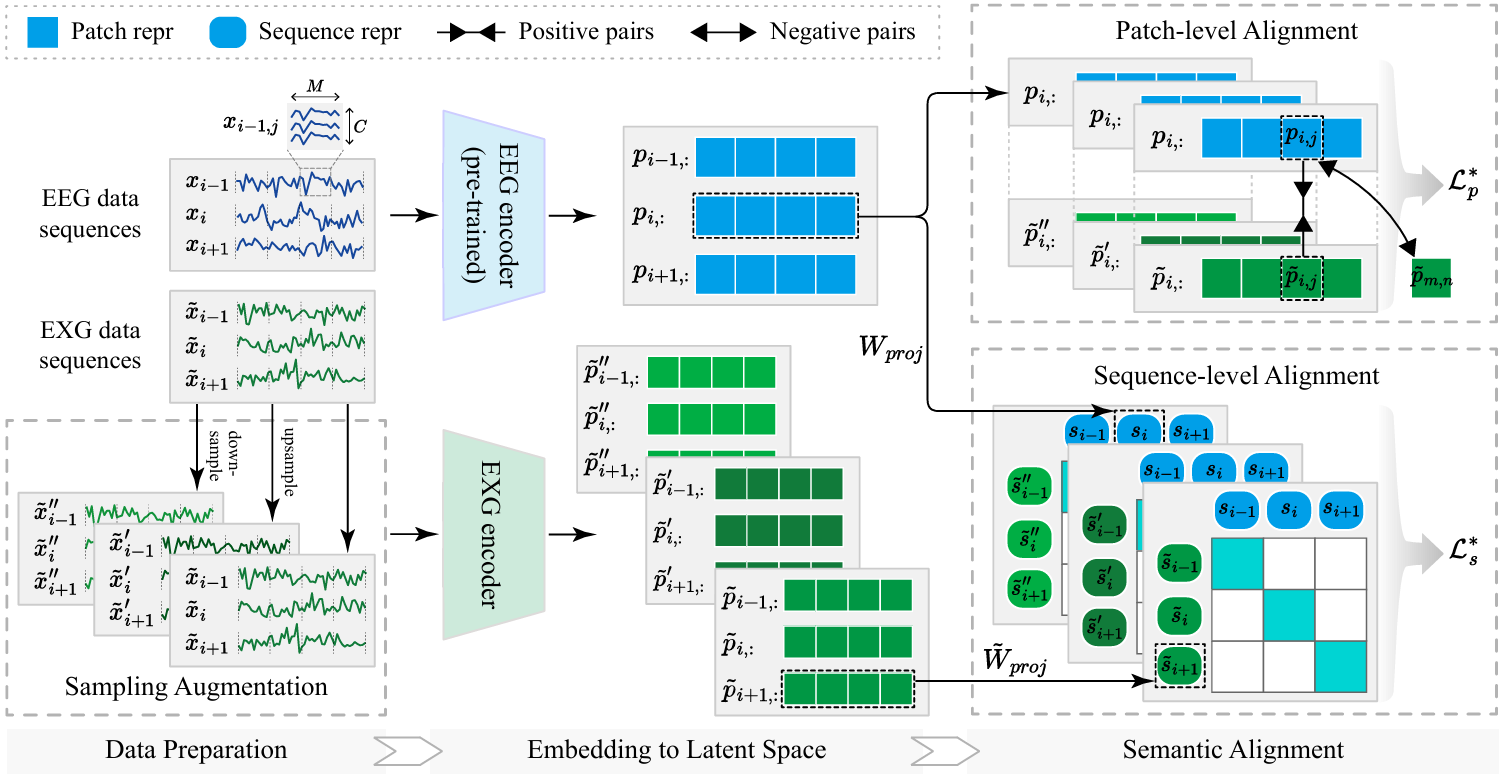
Brant-X: A Unified Physiological Signal Alignment Framework
Daoze Zhang, Zhizhang Yuan, Junru Chen, Kerui Chen, Yang Yang
code
Brant-X is a unified physiological signal alignment framework to learn representations from various physiological data.

Brant-2: Foundation Model for Brain Signals
Zhizhang Yuan, Daoze Zhang, Junru Chen, Gefei Gu, Yang Yang
code
Brant-2 is the first large-scale, off-the-shelf model that can be applied to the application scenrios of both SEEG and EEG.
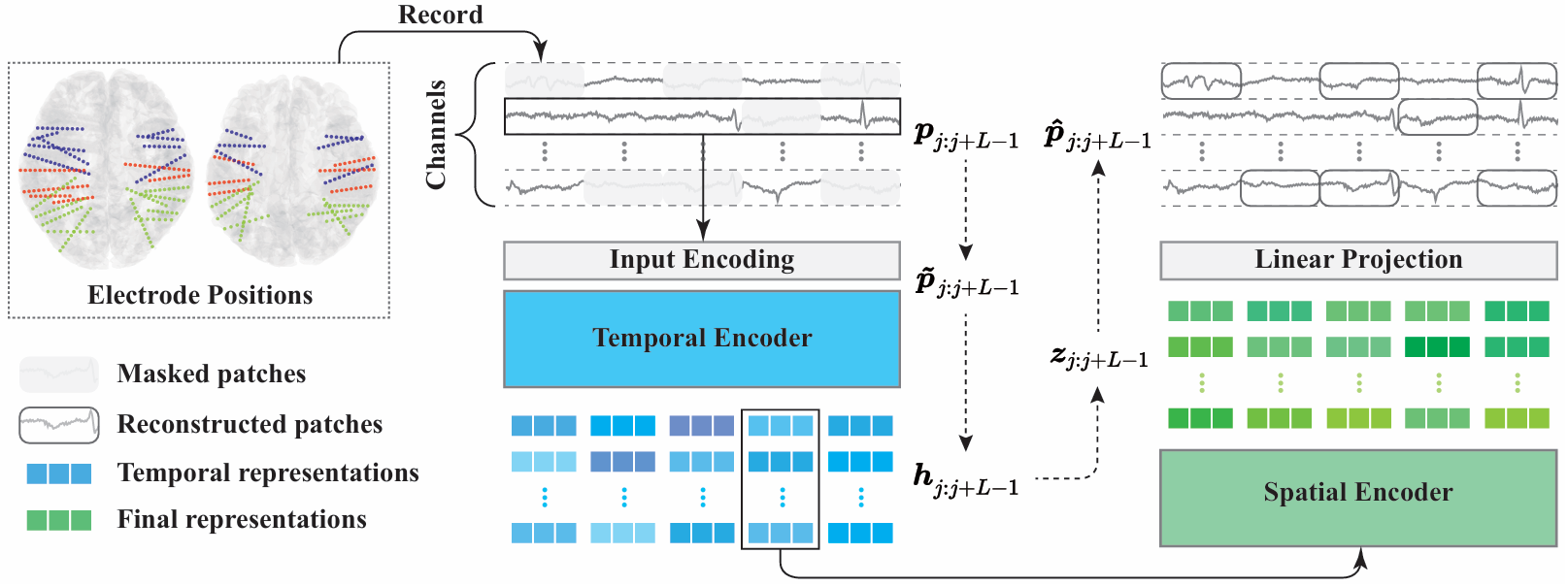
Brant: Foundation Model for Intracranial Neural Signal
Daoze Zhang*, Zhizhang Yuan*, Yang Yang, Junru Chen, Jingjing Wang, Yafeng Li
(*: equal contribution)
Homepage |
code
Brant is a foundation model in the field of intracranial recordings, which learns powerful representations of intracranial neural signals.

PPi: Pretraining Brain Signal Model for Patient-independent Seizure Detection
Zhizhang Yuan*, Daoze Zhang*, Yang Yang, Junru Chen, Yafeng Li (*: equal contribution)
code
PPi is a pretraining-based model to conduct patient-independent seizure detection on SEEG in the clinical scenario.
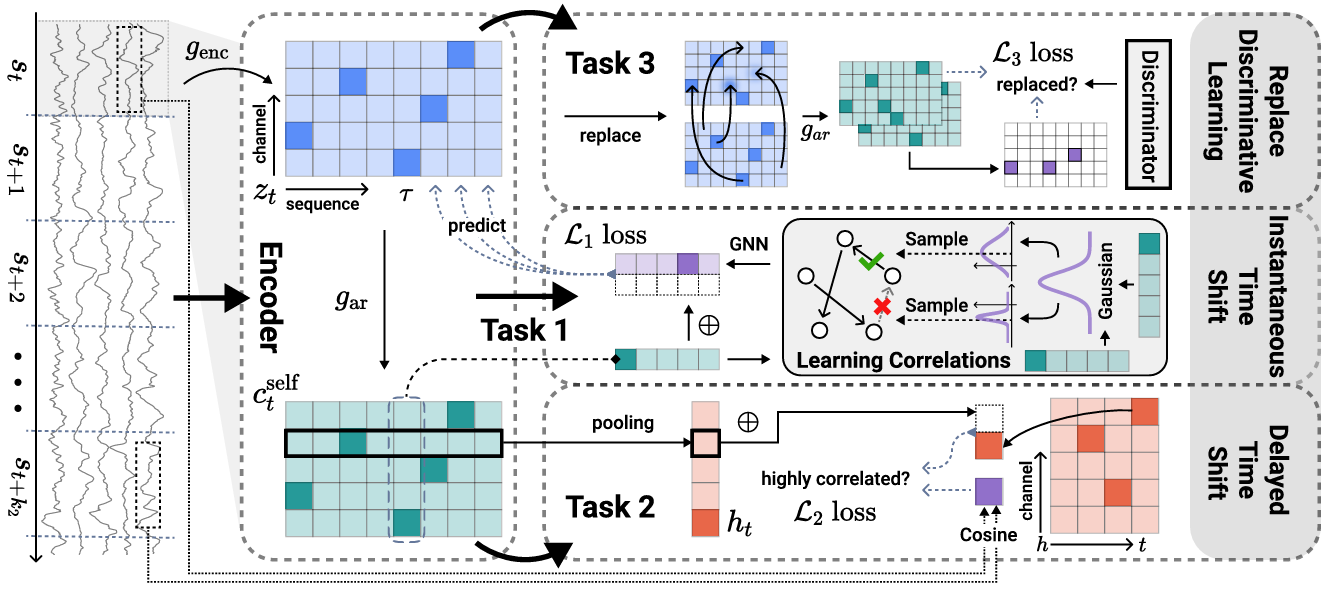
MBrain: A Multi-channel Self-Supervised Learning Framework for Brain Signals
Donghong Cai*, Junru Chen*, Yang Yang, Teng Liu,
Yafeng Li (*: equal contribution)
MBrain is a generalized self-supervised learning framework, which can be applied to pre-train both EEG and SEEG signals.

BrainNet: Epileptic Wave Detection from SEEG with Hierarchical Graph Diffusion Learning
Junru Chen*, Yang Yang*, Tao Yu, Yingying Fan, Xiaoling Mo, Carl Yang (*: equal contribution)
BrainNet is a model that jointly learns the dynamic diffusion graphs and models the brain wave diffusion patterns thereon to achieve accurate epileptic wave detection.
Explore the robustness of graphs
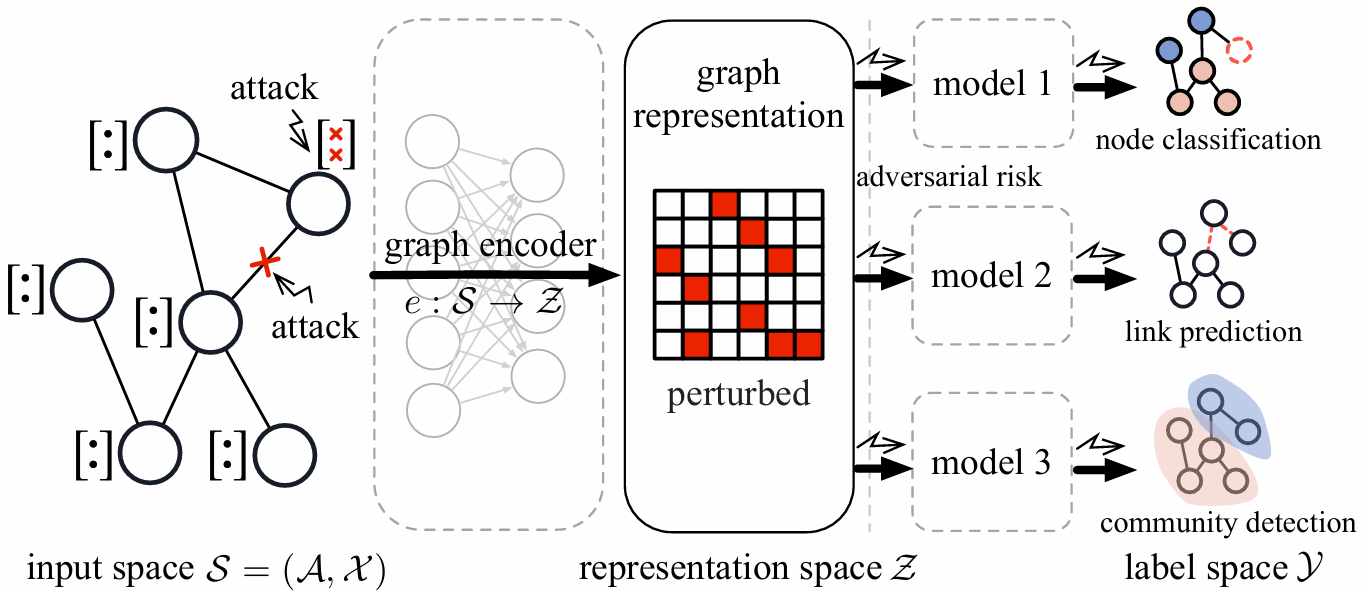
Unsupervised Adversarially-Robust Representation Learning on Graphs
Jiarong Xu, Yang Yang, Junru Chen, Chunping Wang, Xin Jiang,
Jiangang Lu, Yizhou Sun
code
We propose a robust graph pre-trained model, such that the adversarial attacks on the input graph can be successfully identifed and
blocked before being propogated to different downstream tasks.
AI Open Robustness of Deep Learning Models on Graphs: A Survey
Jiarong Xu, Junru Chen, Siqi You, Zhiqing Xiao, Yang Yang, Jiangang Lu
🎖 Honors and Awards
- 2021,2023 Outstanding Graduate Student of the Year
- 2020 Outstanding Undergraduate of Zhejiang University
- 2019 First Prize Scholarship
- 2019 Excellent Student Cadre
📖 Educations
- 2020.08 - 2025.07, Ph.D. in Computer Science and Technology, Zhejiang University, Hangzhou, Zhejiang.
- 2016.08 - 2020.07, Dual Bachelors in Statistics and Computer Science and Technology, Zhejiang University, Hangzhou, Zhejiang.
- 2013.08 - 2016.07, Panzhihua No.3 Senior High School, Panzhihua, Sichuan.
💬 Invited Talks
- 2023.11, Invited speaker of SMP 2023 to introduce the lines of works of BrainNet.
- 2022.08, Oral presentation at KDD 2022 to introduce the paper
BrainNet.
💻 Academic Service
- 2024, Program committee member of NeurIPS
- 2021–2023, Program committee member of KDD
- 2023, Program committee member of TNNLS
- 2022–2023, Program committee member of TBD
👽 Personal
Born in the chilly embrace of January, I’m an Aquarius.
My MBTI says I’m an INFJ, but honestly, I’m just an ambivert with a sprinkle of everything.
I’m all about philosophy, psychology, and sociology, and I run a WeChat public account called 第N面墙.
Join me there for some mind-bending discussions.
My dream is to wander the cosmos.
And my current favorite quote: Anxiety is the dizziness of freedom. - Soren Kierkegaard.
When it comes to sports, I jive with basketball, badminton, and hiking;
as for the arts, musicals, dramas, and impressionist art make my heart sing.
My all-time favorite movies? Mr. Nobody and The Before Trilogy.
I’m a fan of puzzle games such as the Rusty Lake series, and lately, I’ve been playing Valorant.





